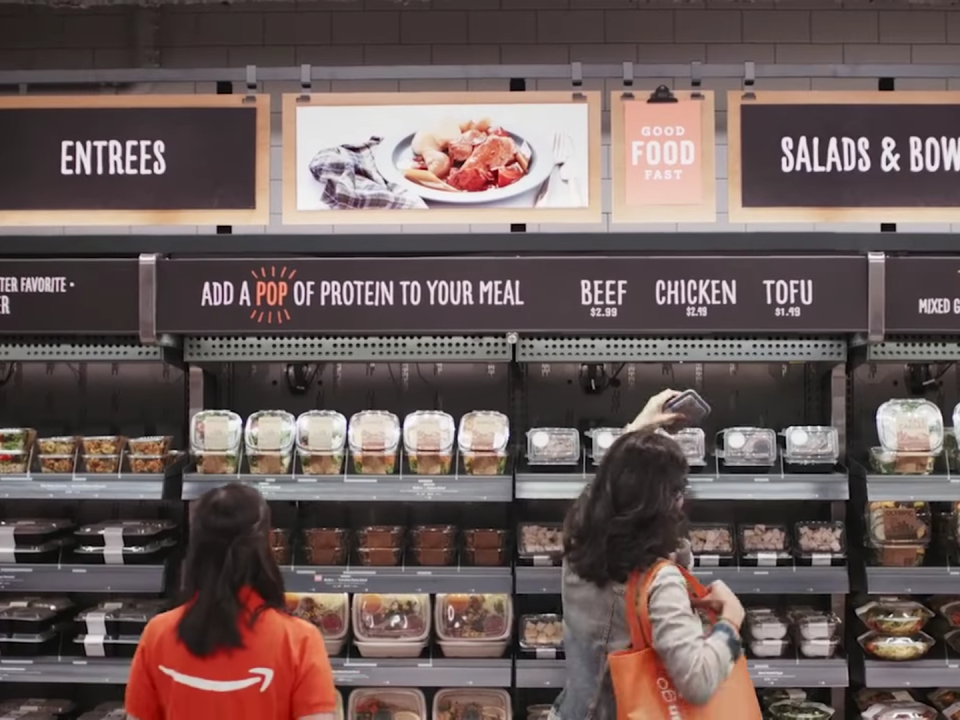Artificial intelligence in grocery stores could affect what you buy and pay

In a bid to better its inventory management, Morrison’s, the U.K.’s fourth-largest supermarket chain, has been steadily rolling out artificial intelligence (AI) across its 500 stores.
The platform, provided by Blue Yonder, uses big data and machine learning to predict exactly what stock is needed based on historic sales data, as well as outlying variables like the weather surrounding each individual store, nearby events and, in cases where the AI gets the prediction wrong, it can learn from its mistakes.
Sylvain Charlebois, Dean of the Rowe School of Business at Dalhousie University and a prominent voice surrounding food distribution and policy, says that while the benefits of artificial intelligence and big data are apparent to North American retailers, innovation has been slow in the grocery sphere.
“Europe is farther ahead than us just because they (have) smaller stores and space is more expensive, so they have to become way more strategic about how they actually manage their inventories and how they manage prices,” he says.
“In Canada, we’re not forced into making these decisions.”
But that’s changed with Amazon’s Go supermarket concept, which allows customers to walk in, grab what they need and walk out, all without opening their wallet. The storefront is being piloted for Amazon employees in Seattle and while it’s been plagued by delays, it is set to open within the next few months.
“With Amazon Go you’re basically setting up a store with four million data points – that’s power,” adds Charlebois.
“Amazon is going to use it to double up their market and grocers know that so they have to keep up.”
The price is right
The implications of AI extends beyond just inventory management to pricing optimization. As Charebois explains, imagine being able to set acceptable price ranges for any product, and prices could change by the hour, depending on inventory levels and fluctuations in demand.
“Since fresh produce constitutes about 40 per cent of sales from an average food store, striking the right balance is key – the window in which to course correct if an item does not sell could be measured in minutes or hours, rather than in days or months,” Charlebois wrote in a column on the potentials of AI.
“For example, a chilly overcast Victoria Day weekend does not generate the same sales as when the weather is sunny, hot and humid … procurement, promotions – everything will require tweaking.”
Sylvain Perrier, president and CEO of Mercatus, a Toronto-based company providing digital solutions to the grocery industry, agrees, saying data analysis carries a lot of potential for grocers taking a fresh first approach, especially when it comes to reducing shrink – food that goes to waste before it can be sold.
Unfortunately, the industry still has a tendency to veer towards less-than-scientific methods for stocking inventory and pricing, admits Perrier, whose clients are all in the U.S.
“The notion of using analytics for proper merchandising, inventory management and deciding what goes on sale in the weekly circular is still extremely ad-hoc,” he says.
“I’ve seen cases with some extremely large, well-financially performing retailers that determine what goes on sale during the week (by going) into the back room and pulling out the flyers for that week for the last ten years.”
That’s not to say Canadian grocers aren’t interested in innovation.
Perrier points to Loblaws as a leader in the sphere. Not only does the company work with both SAP, an enterprise resource planning software, and Fair, Isaac and Company (FICO) for data analytics, the grocery giant also has a digital innovation lab for research and development.
And the business case is there, says Perrier.
“We’ve seen cases with some retailers that using analytics that has driven costs at least five to ten per cent out of the supply chain, at least in the early stages, and we’ve seen other retailers increase revenue on a per-basket-base north of 8 per cent,” he says.
“That’s huge … but the maturity required to do that is very significant.”
Perrier says there’s no question large grocery chains like Loblaws will lead the charge in implementing AI and big data analytics.
“If you’re a small chain, an independent, family-owned grocer with five stores, you’re buying your inventory from someone else, relying on the store manager to know what to replenish,” he says.
But larger companies with lengthy supply chains are going to want to maximize returns, and the way to do that is through letting machines eliminate the guesswork.
“My sense is they know they need to do it, but they’re either a little bit insecure about how to use data, or they’re confused because it’s happening so fast,” says Charlebois.
“I think it’s more about insecurity with machine learning … would you trust a machine to tell you exactly how to manage your store? It seems counter-intuitive – it is a highly traditionalist sector and we often forget about that.”

 Yahoo Finance
Yahoo Finance 